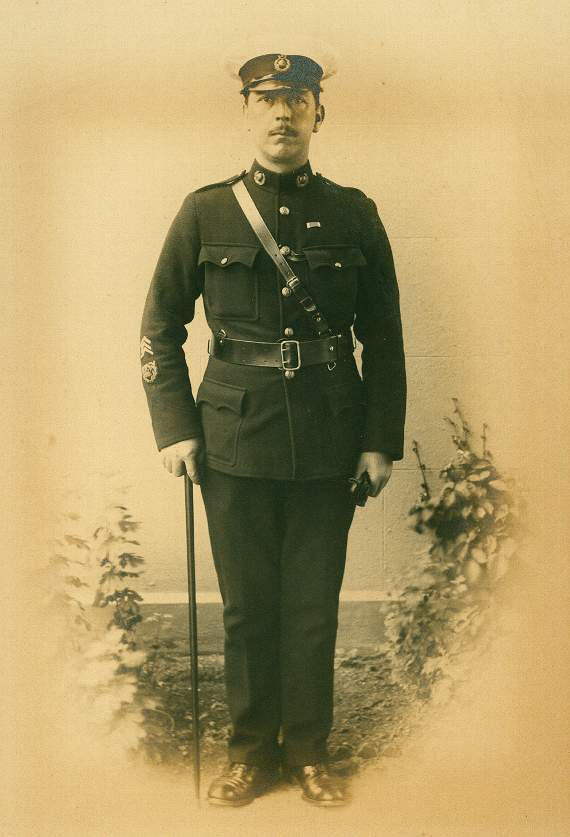A FAMILY has looked back 100 years to track down the trio of First World War ancestors who fought and survived the bloody conflict.
One was mentioned in despatches, another was twice wounded in the fighting and a third was gassed during the western Front horrors that saw hundreds of thousands die amid the mud and barbed wire.
The details of the three war survivors, from East Allington, Harbertonford and Totnes, have been unveiled by John Mingo, who lives in Westonfields, Bridgetown, Totnes, and he is anxious to find out more about his three relatives.
He uncovered the details of his own family after reading about proposals to set up a new memorial in the town – to all the men and women who fought and survived the four-year Great War.
David Cole, who grew up in Totnes and whose great uncle died in the First World War, hoped to set up a memorial on the Longmarsh with the names of all the men who fought and survived – as well as those who died whose names are already honoured on the town’s war memorial.
Mr Cole’s plans inspired Mr Mingo to set about looking out details of the three members of his family who fought and survived – his two grandfathers and a great uncle.
Mr Mingo’s paternal grandfather was Frank Luscombe who served as a stretcher-bearer at Ypres.
Mr Mingo said: ‘ He was wounded twice and is buried in East Allington church graveyard, along with his wife Emma.
‘They lived in Parklands, Totnes, when the American requisitioned their house in East Allington in preparation for the D-Day operation in 1944.
‘We know very little about Frank Luscombe and would welcome any information. We have a silk handkerchief from Belgium that Frank sent to Emma (his wife).’
The second family veteran is Frank Lamble – Mr Mingo’s great uncle.
‘He was gassed in world war one and was always very out of breath. He worked at the Symons Cider Stores, then in South Street adjacent to Blue Ball Hill. He lived in Cistern Street and his family, we think, came from Harbertonford.
His maternal grandfather was Quartermaster Sergeant TC Gardner who served with the Plymouth Royal Marines.
‘He was mentioned in despatches by Field Marshal Sir Douglas Haig on November 7, 1917, for gallantry and distinguished services in the field,’ said Mr Mingo. ‘Haig was commanded by the King to record his high appreciation of the services rendered.
‘He was also thanked for his labours on behalf of the Jerram Committee in 1919 which related to an appeal by the petty officers and men of the Royal Navy concerning injustices to the lower deck and how it could be remedied.’
QMS Gardner came to live in Totnes in 1941 after he fled the bombing in Plymouth. He died while living at 3 Ramparts Walk, Totnes, in 1943 and is buried in the cemetery at Follaton.
‘Remembering the First World War, we are very proud of him,’ said Mr Mingo.
‘Again any further information about him would be welcomed.’





Comments
This article has no comments yet. Be the first to leave a comment.